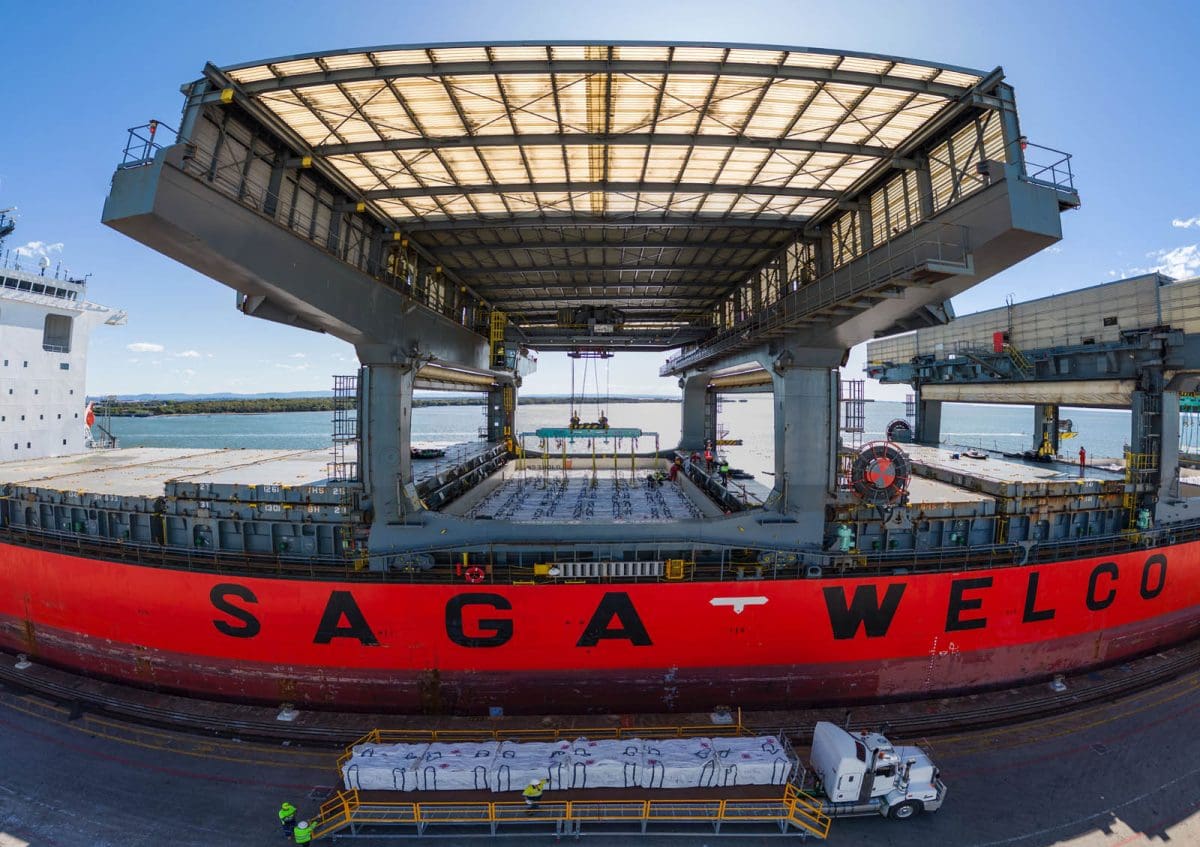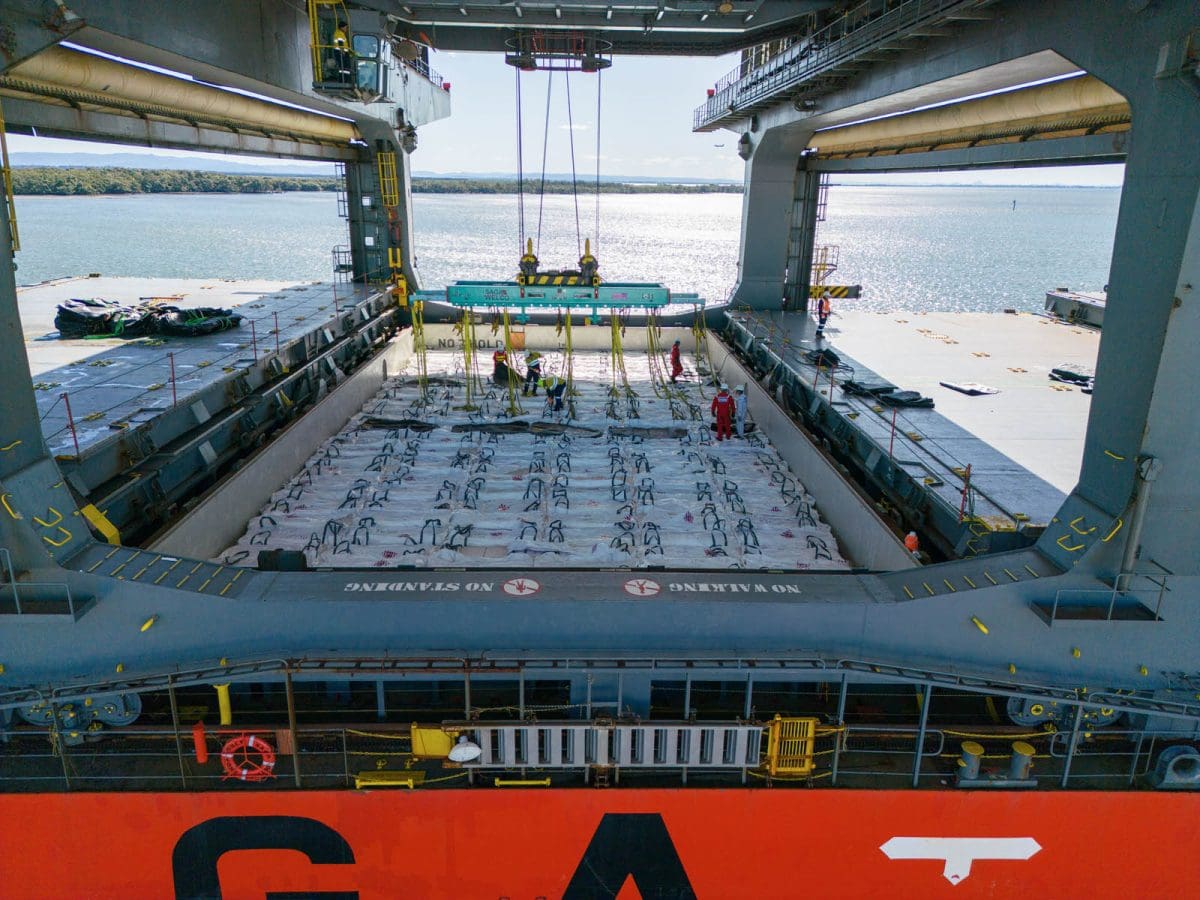
A break-bulk cargo of cotton loaded in Brisbane this month on board the Saga Odyssey. Photo: Mark Duffus, MD Photography
A UNIQUE shipment of Australian cotton is on its way to Turkey on board the Saga Odyssey as the latest iteration of exporter ingenuity in a challenging environment.
Carrying 108,000 bales in the holds and another 22,000 bales in containers on deck, the LDC cargo left the Port of Brisbane on August 20.
It is believed to be the biggest break-bulk cotton cargo ever to ship from Australia.
Break-bulk revisited
Break-bulk was commonly used to transport grain, wool and grain prior to the development of the container trade in the 1980s.
A fleet of vessels equipped with twin travelling gantries and box-shaped hatches is now bringing increased efficiency to this mode of transport, which is meeting demand from sectors beyond its traditional base of forestry and metals.
Since COVID impacted global supply chains in 2020, the container trade has been severely impacted by expensive and unreliable freight services to just about every destination outside North and South-East Asia, and also limited availability of containers to pack.
It means those exporting commodities like cotton, which have been shipped exclusively in containers until now, have found a new means of getting product to markets.
LDC is a significant trader of cotton globally, and a ginner and merchant of Australian cotton.
It sourced the cotton now on board the Saga Odyssey from producing regions stretching from Central Queensland to the Namoi Valley of New South Wales.
Bales were accumulated at the company’s warehouse on Fisherman Islands at the Port of Brisbane, where bags going in the hold each were filled with four bales.
Trucks then shuttled the bales to the nearby AAT terminal.
LDC is one of many companies planning to do more break-bulk in the near future, and Australian rice exporter SunRice has also exported break-bulk from the Port of Melbourne this year.

A hold on the Saga Odyssey is filled with its break-bulk cargo of cotton at the Port of Brisbane earlier this month. Photo: Mark Duffus, MD Photography
Appeal outside Asia
For Australian exporters, South Asia, the Mediterranean and the Middle East are the most problematic for containers, and trade sources globally have said any container route not servicing China is challenging.
Sources in the pulse and grain as well as cotton trade say eastern Australian ports continue to experience congestion and container availability issues.
“Empirical evidence would suggest the rate of empty containers being exported out of Australia continues to increase,” one trade source said.
“Recycling of container movement back to the high-demand premium container-freight routes from China to North America and Europe is causing potential structural changes to container movement and availability from Australia.
“The change in the bilateral trade relationship with China is causing Australia to seek alternative markets.
“It is critically important that Australian agribusinesses generally continues to seek out innovative solutions to source freight into a more diversified customer base.”
Bulk rise to Pakistan, California
Pakistan is Australia’s biggest market for containerised chickpeas, and very occasionally takes a bulk cargo.
Trader sources say it is already lined up to take at least one bulk cargo or part cargo ex CQ when new-crop comes on line.
Australian cottonseed is also a primarily containerised commodity, with Asia and California typically the biggest markets.
Shipping stems indicate a bulk cottonseed cargo is booked to load in Brisbane next month, with another to follow in October, both bound for California.
Australian pulse exports have seen a seismic shift into bulk from containers, and are generally doing only 30-50 per cent of the container volume they were doing pre-COVID.
The shift is being seen in an increase in bulk cargoes or hatches of faba beans, field peas, lentils and lupins.
Trade sources say it is not just Australia turning to break-bulk, with coffee, timber pulp and rice from other origins also shifting into break-bulk as a means of sidestepping the container market.
Grain Central: Get our free news straight to your inbox – Click here

HAVE YOUR SAY